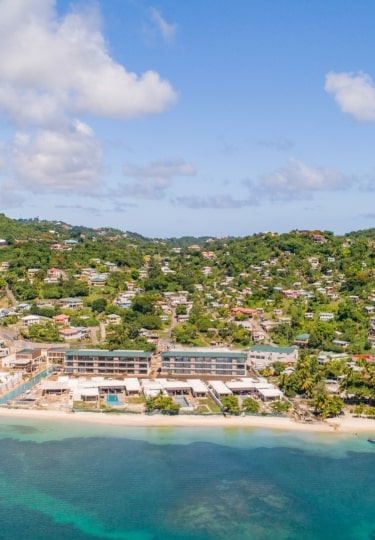While it’s easy to imagine the Caribbean islands as one big paradise of sandy beaches, reggae, and rum punch, there’s an enormous diversity of culture, cuisine, language, and landscapes in the Eastern Caribbean vs. the Western Caribbean. You’ll find coral islands, volcanoes and limestone caves. You’ll hear French, Dutch, and Spanish, as well as Creole and local dialects.
Caribbean cruise itineraries often feature either Eastern or Western Caribbean destinations. Which route you choose will depend on the time you have available and your interests, whether that means scuba diving or volcano hikes, reggaeton or bomba, and even whether you’re a rum punch lover or a Margarita aficionado.
While you may be weighing up the pros and cons of the Eastern Caribbean vs. the Western Caribbean, the reality is, you’ll have a wonderful time whichever you choose. Here are a few thoughts to bear in mind.
Location
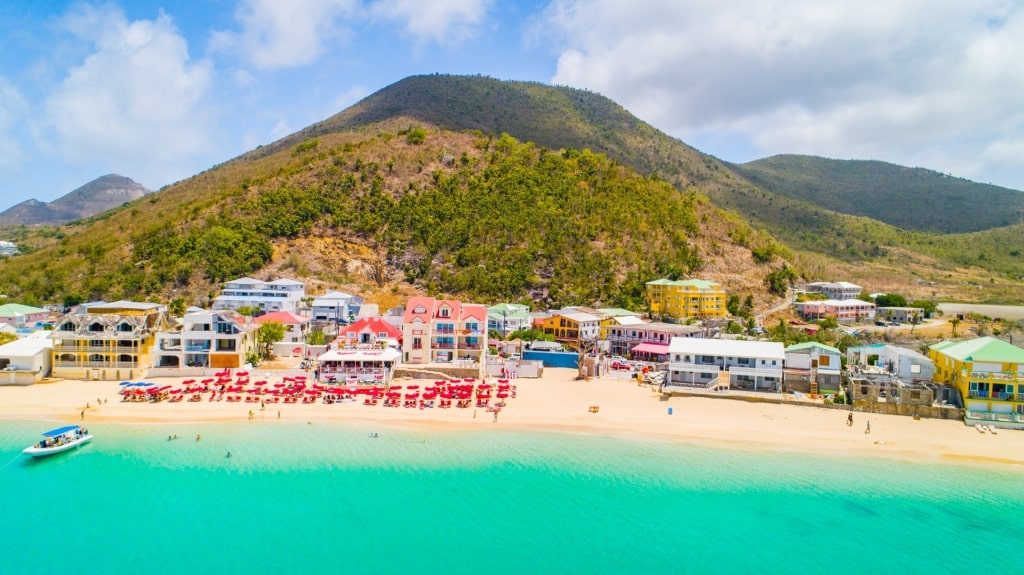
Grand Case Beach, St. Maarten
Whether you choose an Eastern or Western Caribbean cruise, you’ll have an easy journey from the southern United States. Your adventure could start in Fort Lauderdale, Miami, Tampa, Port Canaveral, or even San Juan, Puerto Rico. Some itineraries include a day at sea to relax in the tropical sunshine before you start island-hopping.
Generally speaking, Western Caribbean itineraries feature the Greater Antilles—islands such as Jamaica, Puerto Rico, and Grand Cayman, as well as exciting destinations in Central America and Mexico, from Cozumel and Costa Maya to Belize, famed for its spectacular reefs.
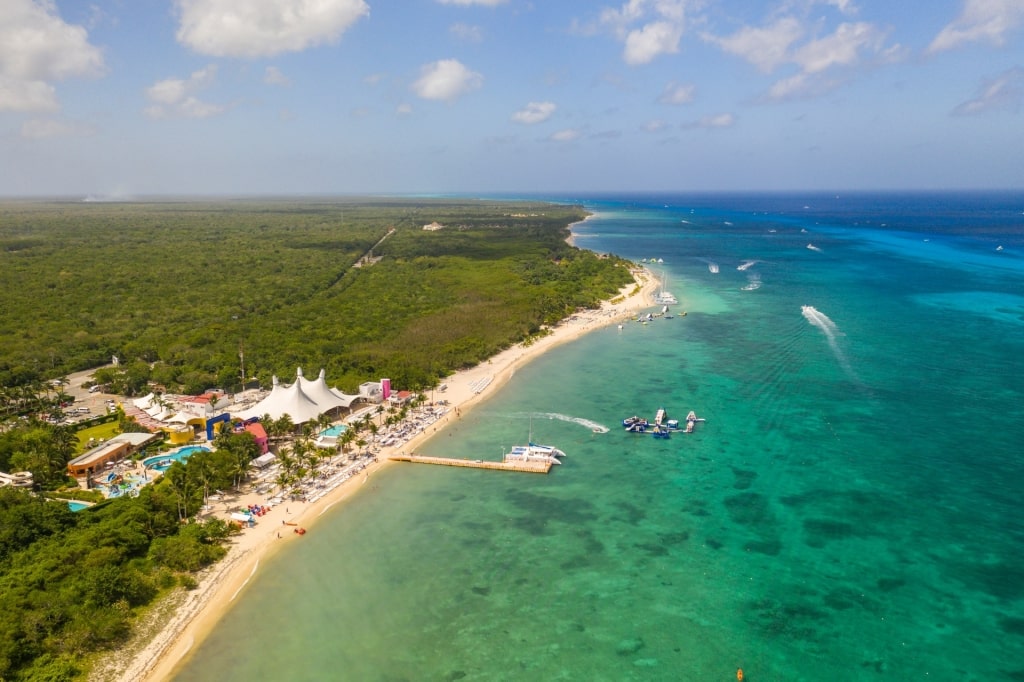
Playa Mia, Cozumel
Short on time? Western Caribbean cruises can be as brief as four nights, although you’ll feel as though you’ve been away for much longer after two blissful days at sea and a full day to explore Cozumel.
Eastern Caribbean cruises take you to the Lesser Antilles, which include St. Maarten, St. Kitts, Antigua, the Virgin Islands, Barbados, and St. Lucia, among others. If you’re looking for a longer cruise, this may be the answer, as many Eastern Caribbean voyages are 10 nights or more.
Weather
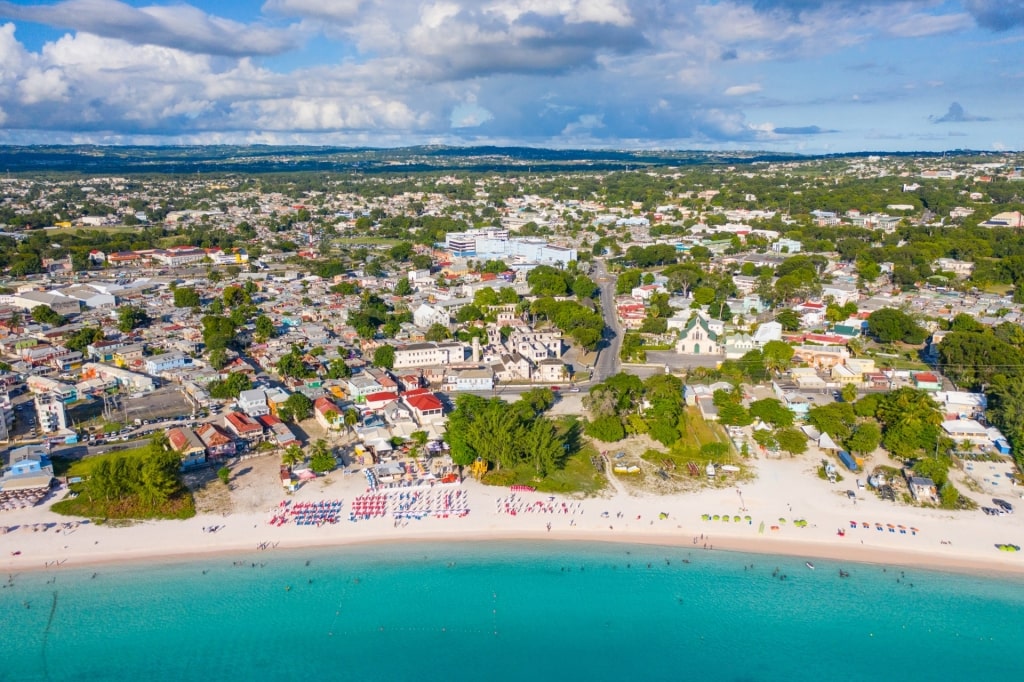
Barbados
The Caribbean lies in the tropics and enjoys warm weather year-round. The busiest season is December to March, when the skies are generally clear and the heat a little less intense. The seasons change in April and May, with June to November considered storm season with high levels of humidity.
There are nuances to this, though, depending on where you sail. In the west, Jamaica is relatively dry in July, but has its heaviest rainfall in June and October. In Barbados, the easternmost island of the Caribbean, September to November is the rainiest period, but hurricanes are rare as the island lies outside the main Caribbean basin.
Wherever you choose to cruise, there are some points to remember. First, if a hurricane is forecast (and forecasting is extremely sophisticated nowadays), a ship can change its course to avoid the worst weather.
Second, even during the rainy season, it’s rare to get endless days of gray sky in the Caribbean. You will almost always have a few hours of sunshine during the day, clouds gathering as the humidity rises, and then a short, sharp storm in the early evening.
Read: Cruising During Hurricane Season: Everything You Need To Know
History
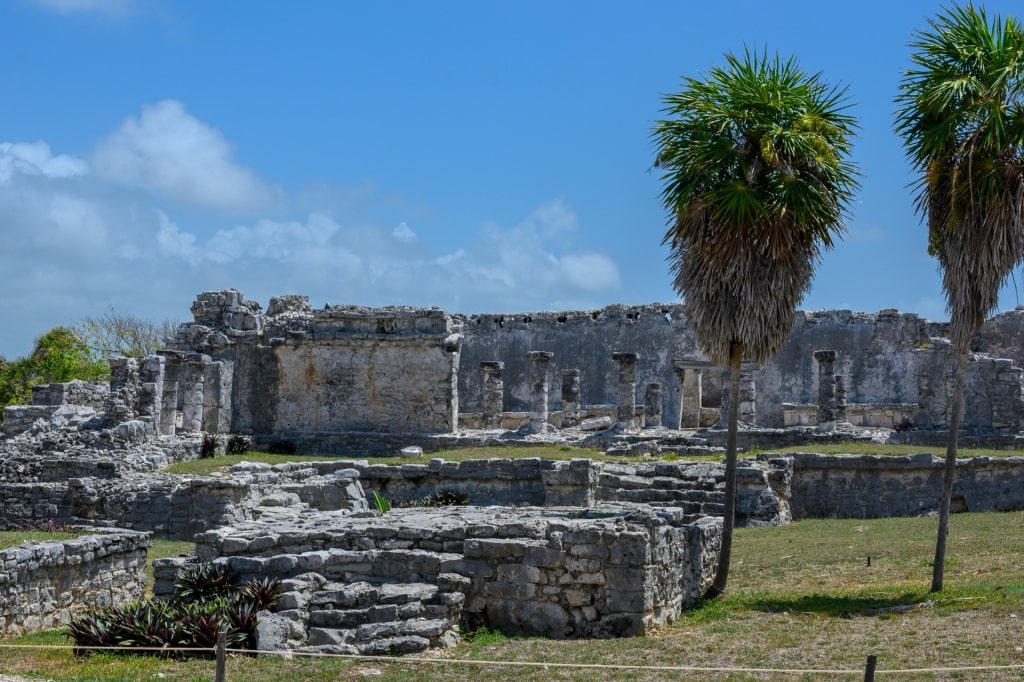
Tulum, Mexico
The whole of the Caribbean is rich in history spanning an array of eras. If you’re choosing between Eastern Caribbean vs. Western Caribbean itineraries and enjoy sightseeing, consider your interests.
Mexico’s Yucatan Peninsula, for example, is famed for its spectacular Maya cities, some buried deep in the rainforest, others, like Tulum, on the coast.
Visit Chichen Itza for that iconic view of El Castillo, the enormous pyramid at the heart of the site, which was built in 1200 AD. Or Chacchoben, a prestigious center of ceremonies as early as 360 AD, concealed for centuries by the rainforest.
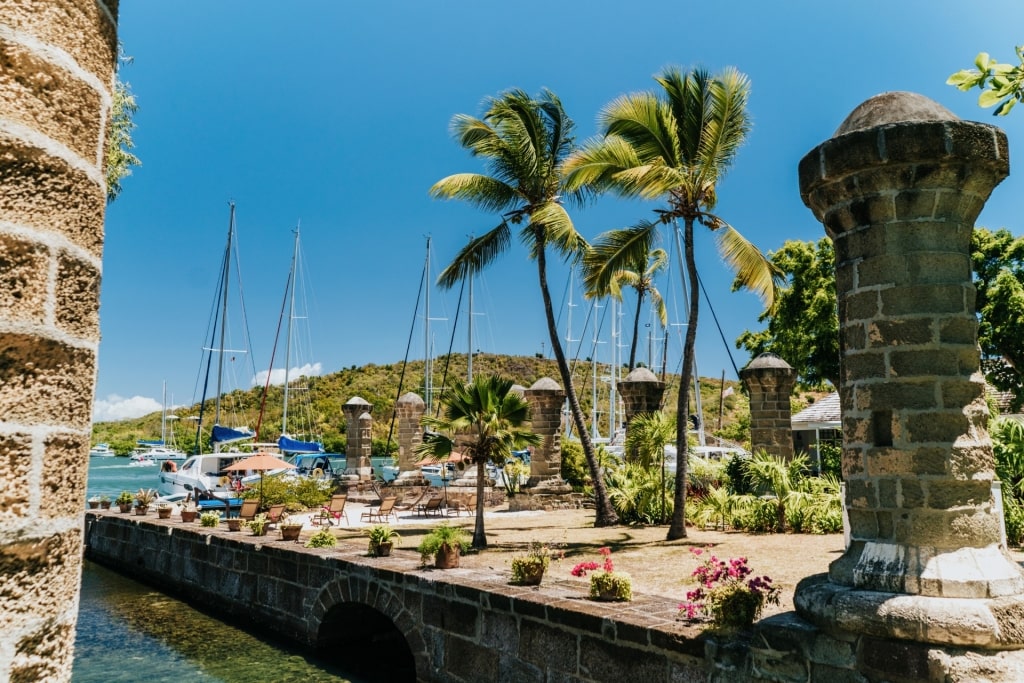
Nelson’s Dockyard, Antigua
The Eastern Caribbean is peppered with fascinating remnants from the age of European discovery and beyond. In Antigua, head for Nelson’s Dockyard to admire the beautifully preserved 18th-century buildings originally constructed for the British Navy in sheltered English Harbour.
On St. Kitts, Brimstone Hill Fortress is a fine example of 17th and 18th-century military architecture. On Grenada, meanwhile, the 18th-century Fort Frederick guards the harbor of St. George’s from its lofty perch 800 feet above sea level.
Puerto Rico arguably has the most impressive fortifications of all. Atmospheric Old San Juan is overlooked by the 16th-century San Felipe del Morro and Castillo San Cristobal, built a century later.
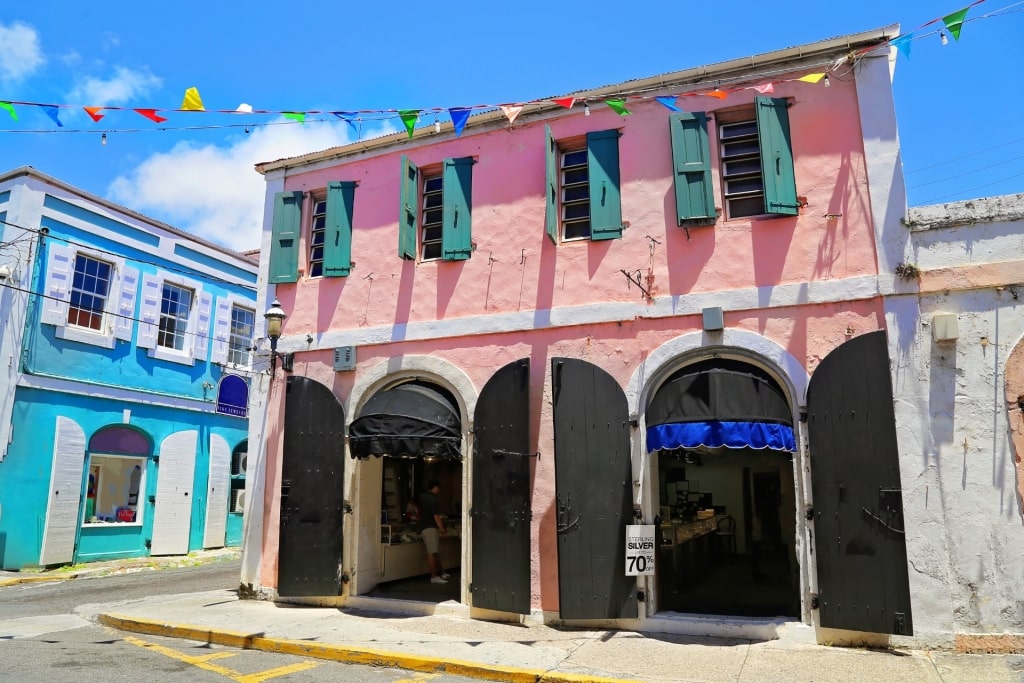
Charlotte Amalie Historic District, St. Thomas
On St. Thomas, the Charlotte Amalie Historic District is packed with interest, from the 17th-century Blackbeard’s Castle to Main Street, lined with shops housed in beautifully kept 18th-century buildings. Take a walking tour here to admire the colorful architecture.
Natural Wonders
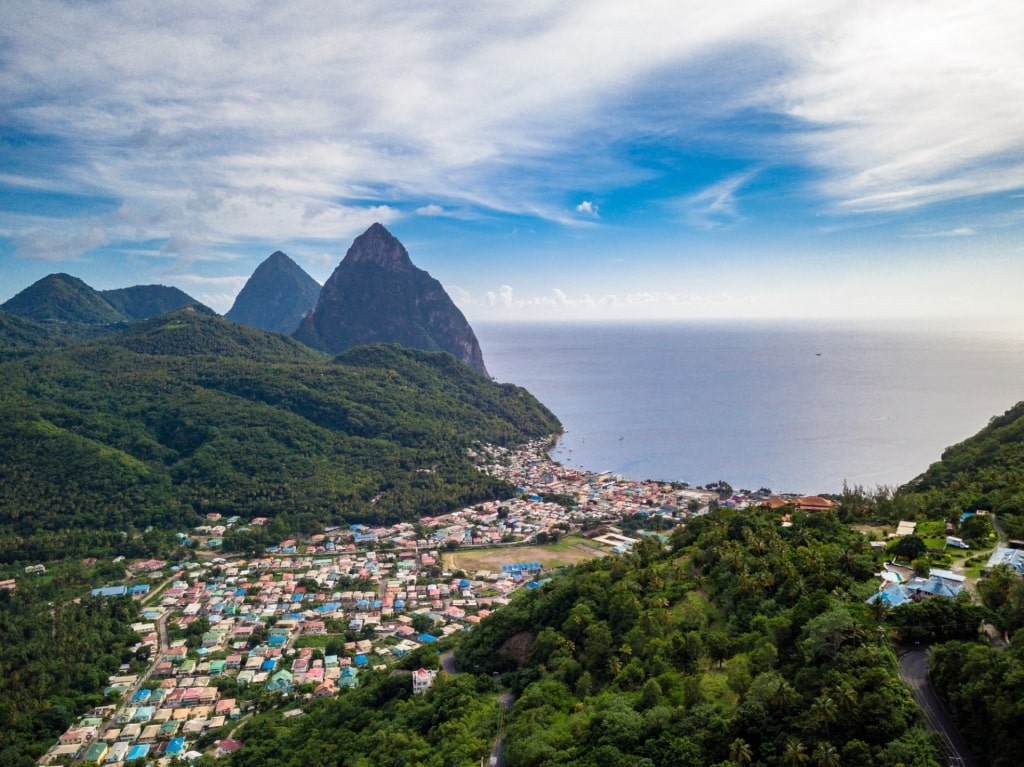
St. Lucia
The whole of the Caribbean, east and west, is blessed with spectacular natural wonders. It’s all a matter of taste. On Western Caribbean cruises, you shouldn’t miss the opportunity to climb Dunn’s River Falls in Jamaica, picking your way up a series of travertine ledges as the cooling water of the river cascades over you on its way to the sea.
If your journey takes you to Costa Maya, you’ll have the opportunity to swim in cenotes, natural sinkholes in the limestone, which are often overhung by jungly greenery. Take a trip to the Bacalar Lagoon where the water segues from turquoise to green to indigo due to the varying depths.
The Eastern Caribbean is no less magnificent. Lush St. Lucia is defined by the jagged twin peaks of the Pitons mountains, two ancient volcanic plugs draped in rainforest. Join a guided hike to reach the summit of Gros Piton, a dizzying 2,619 feet above sea level, with views as far as neighboring St. Vincent across the sapphire Caribbean.
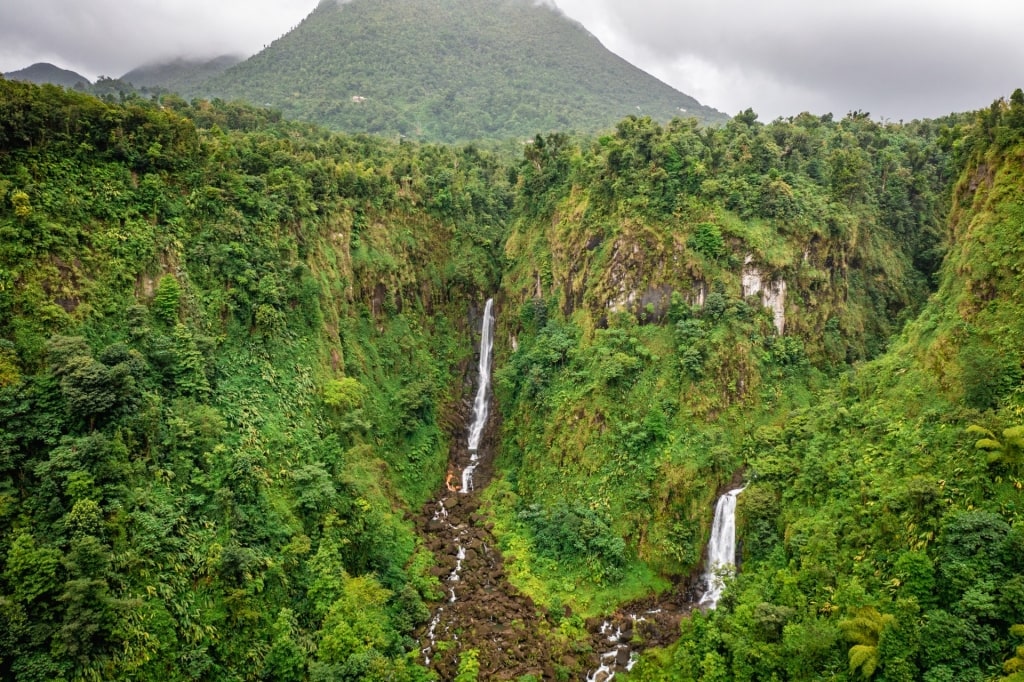
Morne Trois Pitons National Park, Dominica
Dominica, famed for its wild beauty, is another spot for adventurers. The Morne Trois Pitons National Park is at its heart, the towering Devil’s Peak volcano its star attraction. You’ll find it all here, from hot springs to volcanic lakes, steaming fumaroles, and deep ravines.
Another natural wonder in the Eastern Caribbean is The Baths on sleepy Virgin Gorda in the British Virgin Islands, an easy day trip from Road Town, the capital. The Baths is a series of giant tumbled boulders on the water’s edge. Pick your way from one end to the other via short ladders, rope holds, shaded lagoons, and caves, stopping to snorkel in the aquamarine water along the way.
Culture
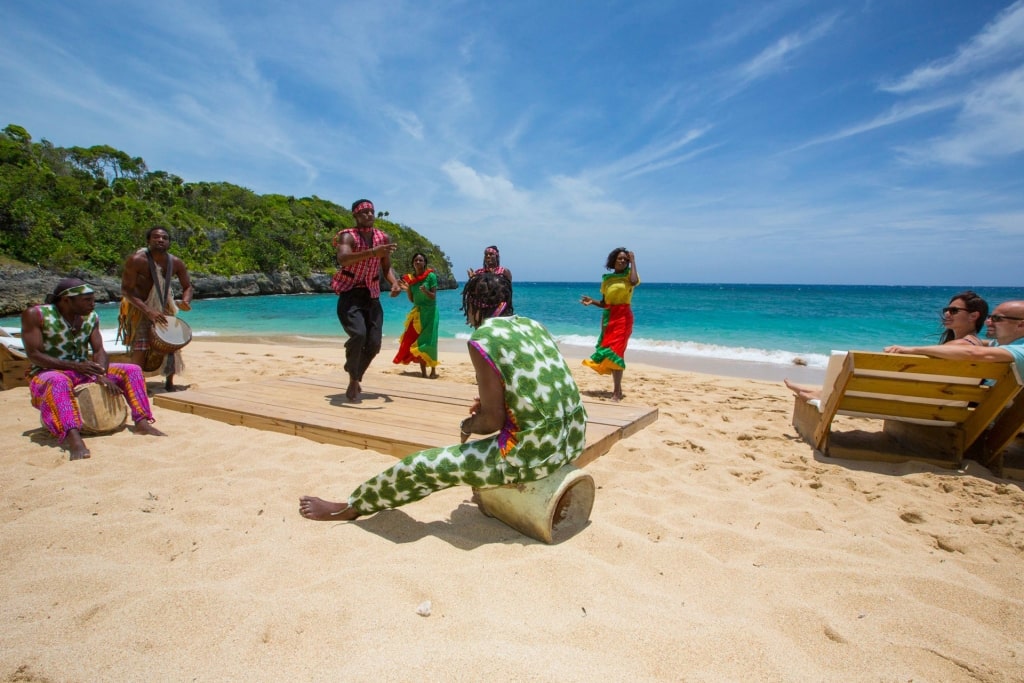
Bamboo Beach, Jamaica
One of the great joys of traveling in the Caribbean is that it’s such a cultural melting pot. In Mexico, for example, there are communities speaking ancient Maya dialects and shamans offering traditional treatments and blessings. You’ll find a completely different cultural calendar in Mexico from the rest of the Caribbean, with many events celebrating Maya traditions.
Jamaica, of course, is rich in musical culture as the home of reggae; there’s nothing like the strains of Bob Marley on a tropical breeze to get you into a state of deep vacation relaxation. Learn about the history of the genre here and visit the national hero’s mausoleum in the hills above Ocho Rios.
On an Eastern Caribbean cruise, you’ll find everything from Dutch to French, Spanish, British, and even Danish influences. St. Maarten, or St. Martin on the French side, is a classic case; it’s split between The Netherlands and France, with defined cultural differences.
For a tiny taste of Paris in the tropics, head to Marigot on the French side, where you’ll find baguettes warm from the oven, flaky croissants, and some of the finest French-Caribbean cuisine in the region.
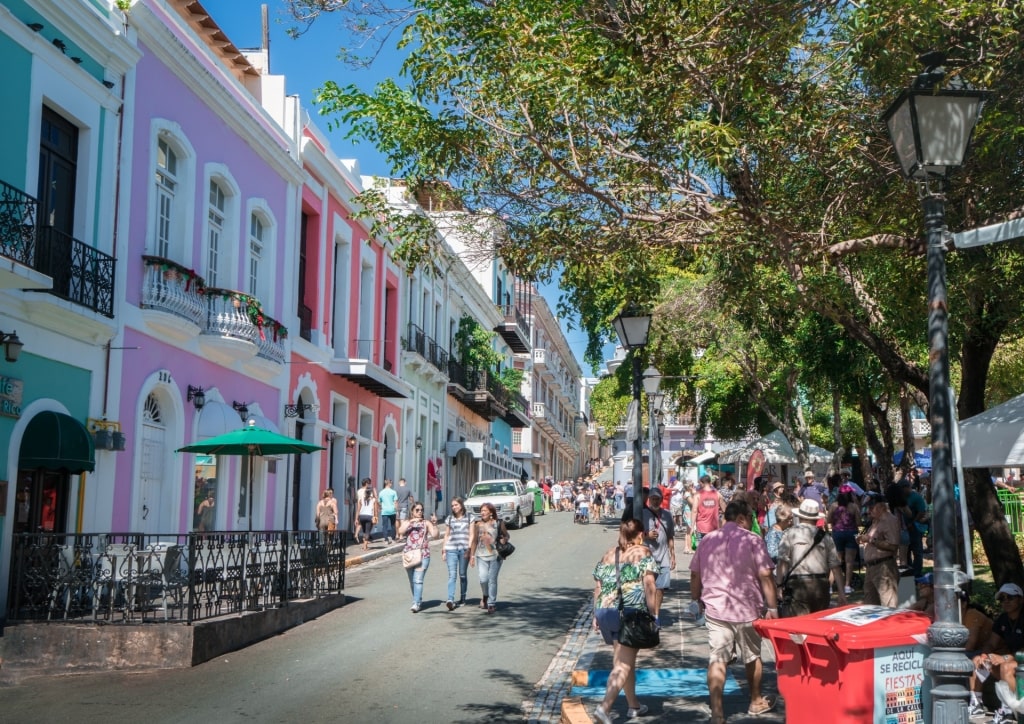
Old San Juan, Puerto Rico
Puerto Rico’s Spanish influences are clear in the colorful architecture, imposing forts, and general joyful spirit of Old San Juan. Here, it’s salsa, not reggae that you’ll hear on the streets. You could even join a salsa class on the beach to hone your technique.
The Dominican Republic, too, has strong Spanish influences. The language spoken here is Spanish, and an entire 60 blocks in the center of Puerto Plata, packed with stately buildings dating from the 16th to 19th centuries, is a UNESCO World Heritage Site.
Beaches
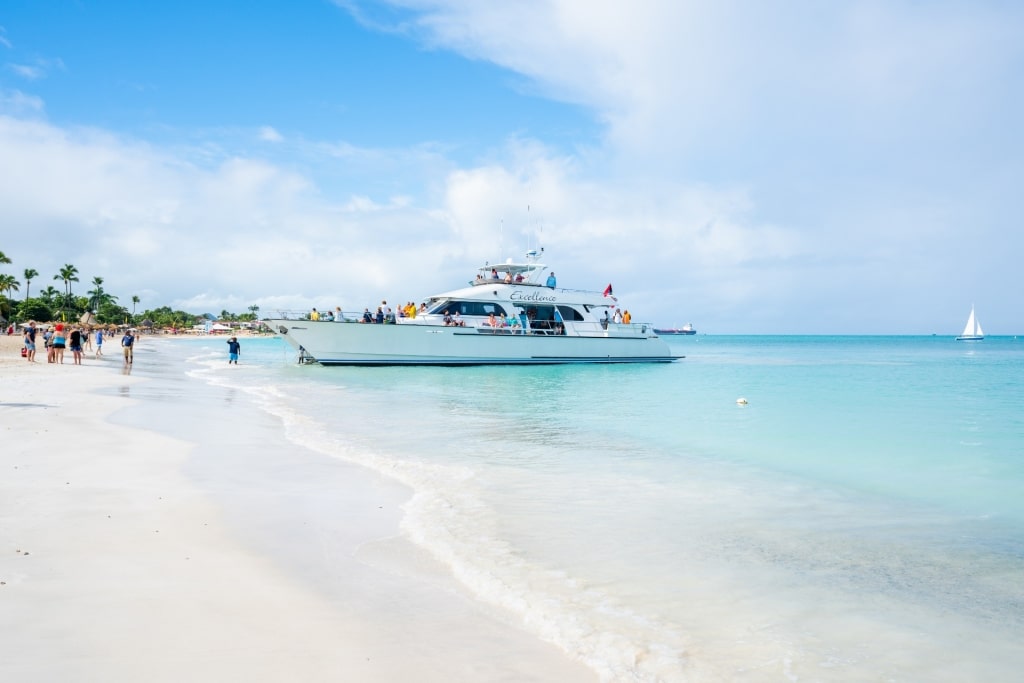
Beach in Antigua
The main reason many people head to the Caribbean, east or west, is the glorious beaches. Wherever you choose, you won’t be disappointed.
There are legendary beaches all over the region. In Grand Cayman, the famed Seven Mile Beach is a sun-worshiper’s dream, with miles of soft sand, warm water, and activities from sea kayaking and paddleboarding to lounging in cool beach bars.
Beaches on the Mexican island of Cozumel are soft coral sand, with clear water and superb snorkeling. Playa El Cielo is one of the best, where you can spot stingrays on the shallow sandbar.
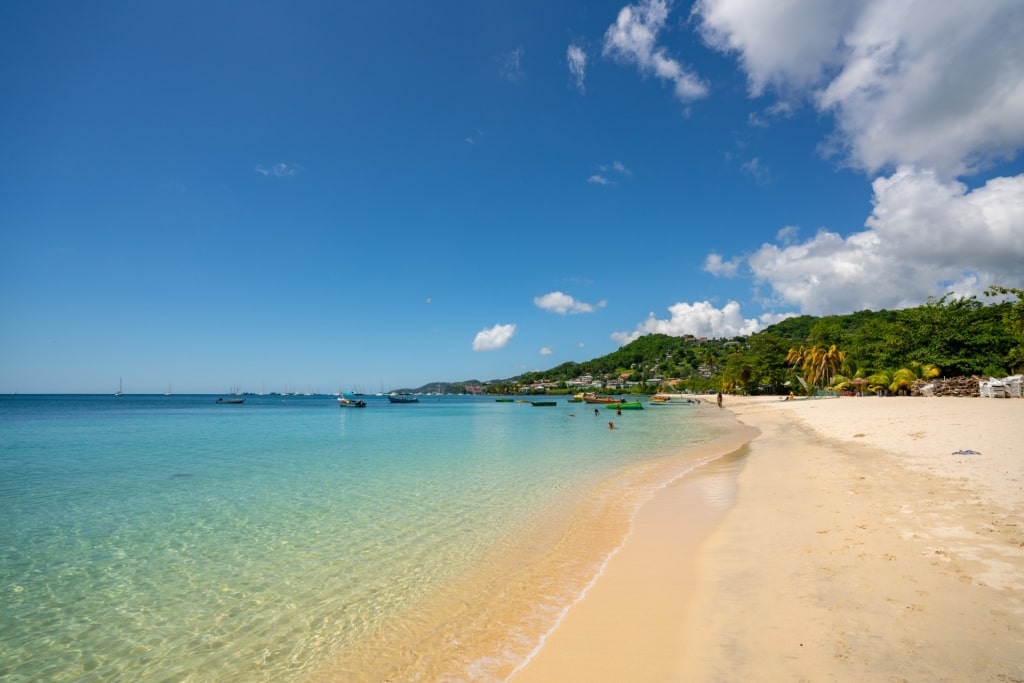
Grand Anse, Grenada
The Eastern Caribbean answers this with its own array of gorgeous sands. Antigua is encircled by 365 beaches, so there’s no shortage; Dickenson Bay is one of the most popular. Grand Anse on Grenada is as perfect as beaches come, where two miles of glittering white sand are backed by sea grapes and palm trees.
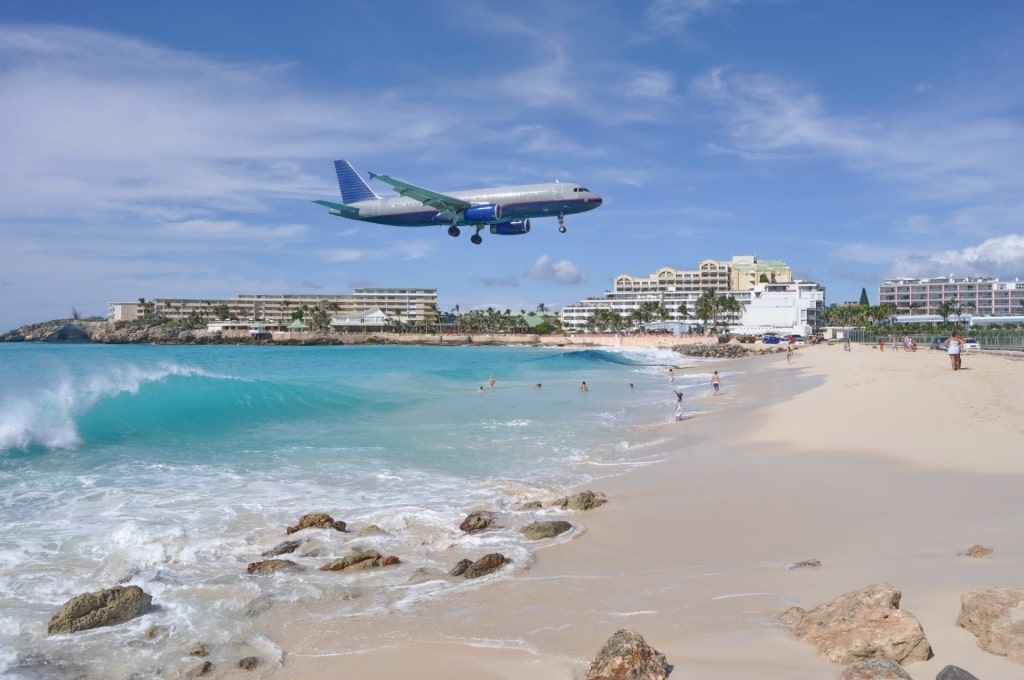
Maho Beach, St. Maarten
On St. Maarten, head to Maho Beach at the end of the runway of the international airport. There’s a festival vibe here all day long, with people gathering in the shallows and performing Mexican waves as vast jets roar overhead, almost in touching distance.
Barbados has two contrasting coasts, the limpid waters of the Caribbean on the western shore and the wild Atlantic to the east. While rock-strewn Bathsheba Beach in the east is more suitable for surfers than swimmers, it has a wild beauty— huge Atlantic rollers crash on the shore, the scent of the sea in the air.
Adventurous Activities
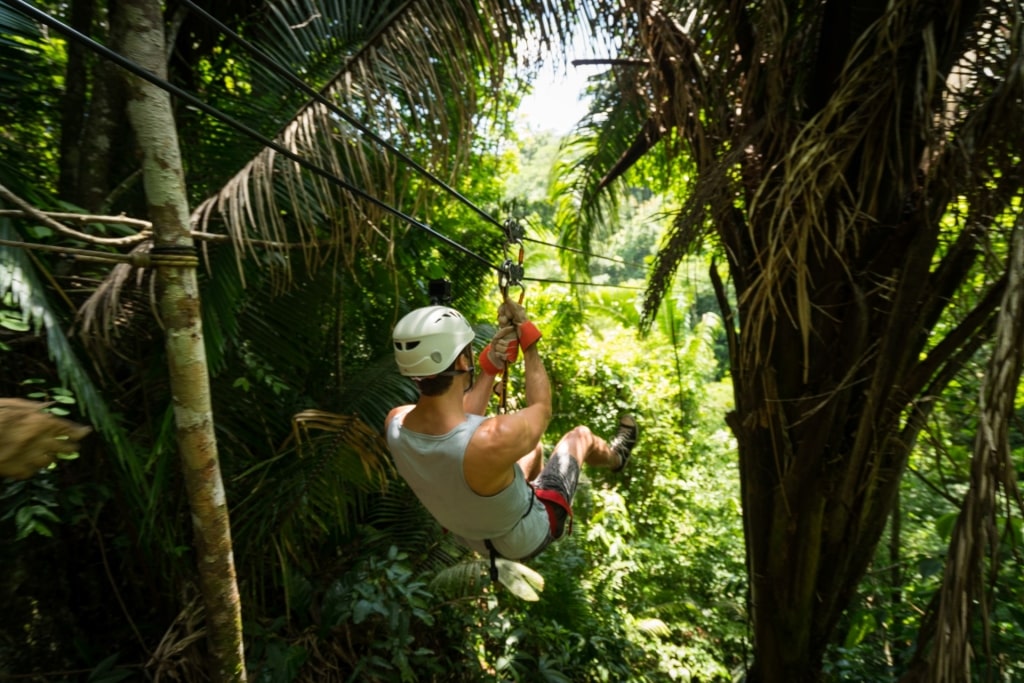
Ziplining in Belize
Across the region, you’ll find thrilling adventures away from the beaches. Mexico’s Yucatan Peninsula, for example, is a playground for all ages. Xel-Ha is a vast lagoon accessible by boat from Cozumel and a paradise of ziplining, caving, snorkeling, and shady mangroves through which you can drift in an inner tube.
Belize, too, is packed with jungly adventures; in a single day, you can zipline over the forest canopy and inner tube through a cave system.
In Jamaica, gliding along the Martha Brae River on a bamboo raft is one of the best things to do on a hot day. For even more thrills, go inner tubing down the White River.
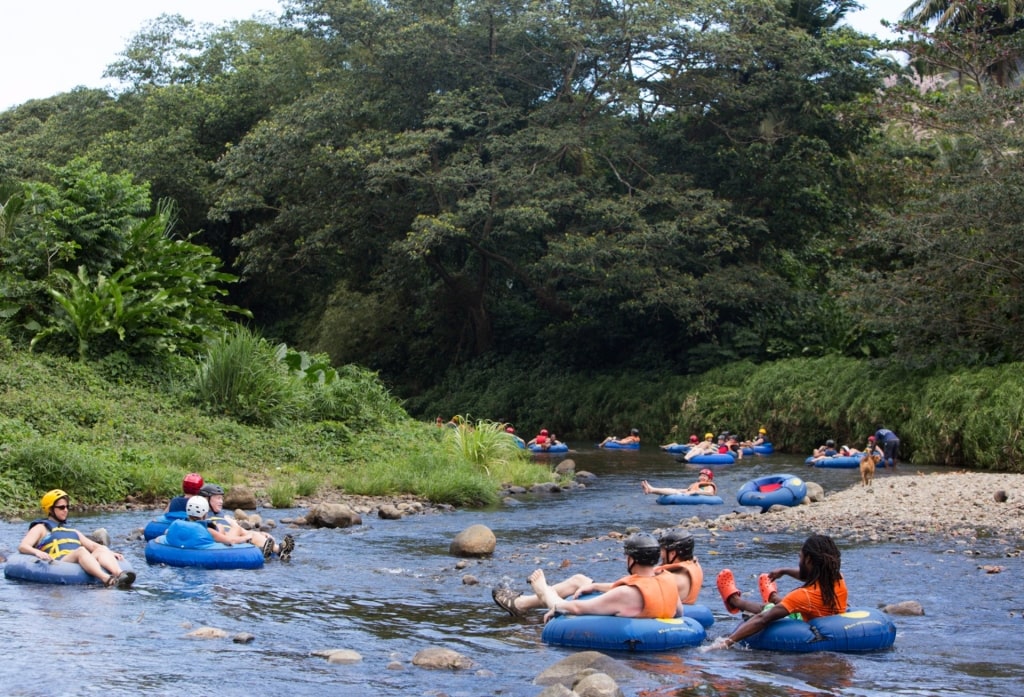
Hibiscus Eco-Village, Dominica
The Eastern Caribbean won’t disappoint thrill-seekers. As it’s so wild and untamed, Dominica has some great activities inland. Spend a blissed-out couple of hours inner tubing from the Hibiscus Eco-Village, the last territory in the world of the Kalinago people. No effort is required here; just lie back in your tube, gaze up at the forest canopy, and enjoy the acceleration over the gentle rapids.
Or admire the view from above. One of the best ziplines in the Eastern Caribbean is at St. Lucia’s Morne Coubaril Estate, where you’ll zipline over the rainforest with the dramatic Pitons as a backdrop. Or head to Wingfield Estate on St. Kitts, where you can fly down five ziplines with views of Mount Liamuiga, the volcano that dominates the landscape.
Food & Drink
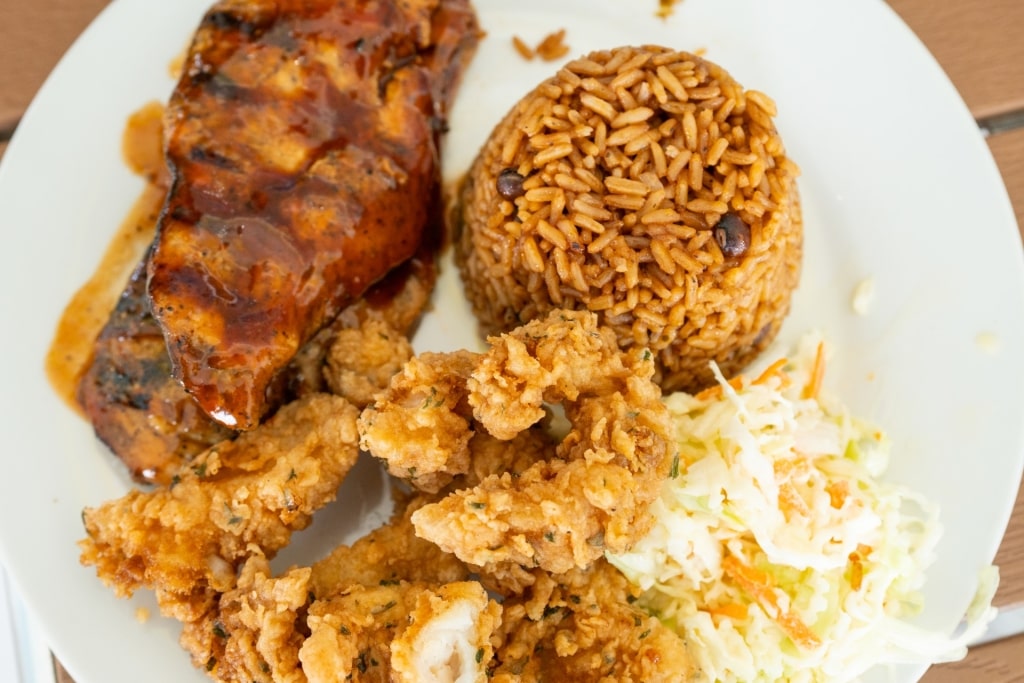
Caribbean food
Caribbean food has been influenced by cuisines ranging from Indian to African, French, Cajun, Spanish, and more, so it’s no surprise that you can expect an explosion of color and flavor in whichever region you visit.
In Antigua, fungee is the national dish, a polenta-like patty served with a rich pepperpot stew. Flying fish and the porridge-like cou cou is the thing to try in Barbados, while in San Juan, Puerto Rico, you can join a cooking class to make mofongo, unripened plantains that are cooked, mashed into a ball, spiced up with sausage, and served in a salty broth.
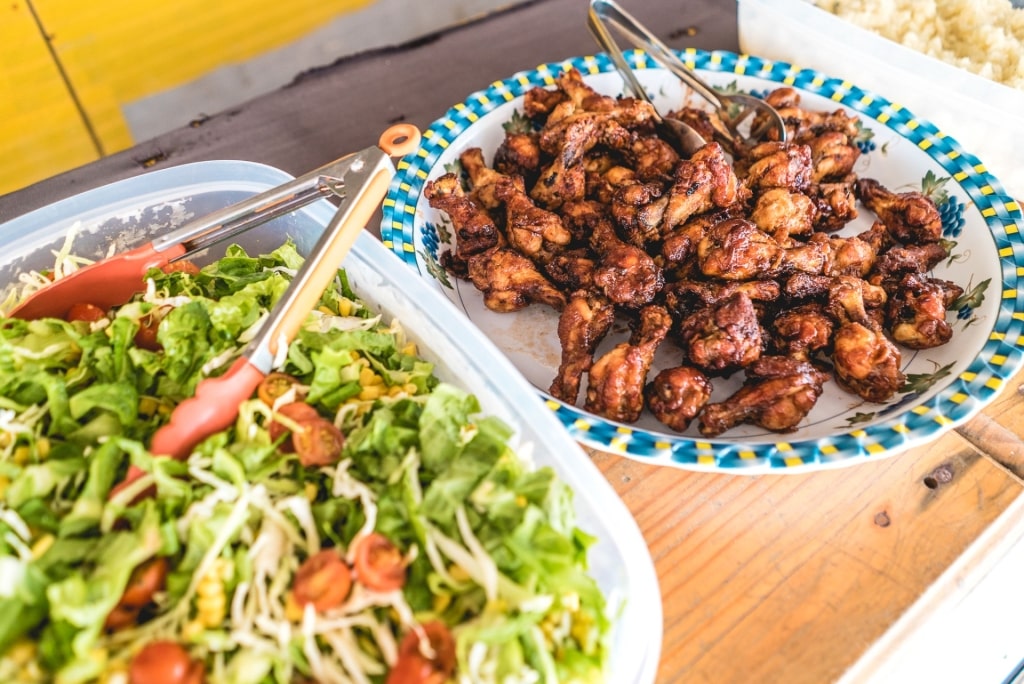
Jerk chicken
In the west, meanwhile, you can’t leave Jamaica without trying jerk chicken, the meat rubbed with spices and hot chilis and slow-cooked over an open fire. Or rice ‘n’ peas, spiced up with garlic and peppers.
Mexico, of course, has its own cuisine, like crunchy tacos, chicken tamales, and dishes cooked with mole, a bitter chocolate sauce. Look out for ceviche, the thinly sliced fish “cooked” in citrus juices, and empanadas, served warm and filled with meat or vegetables.
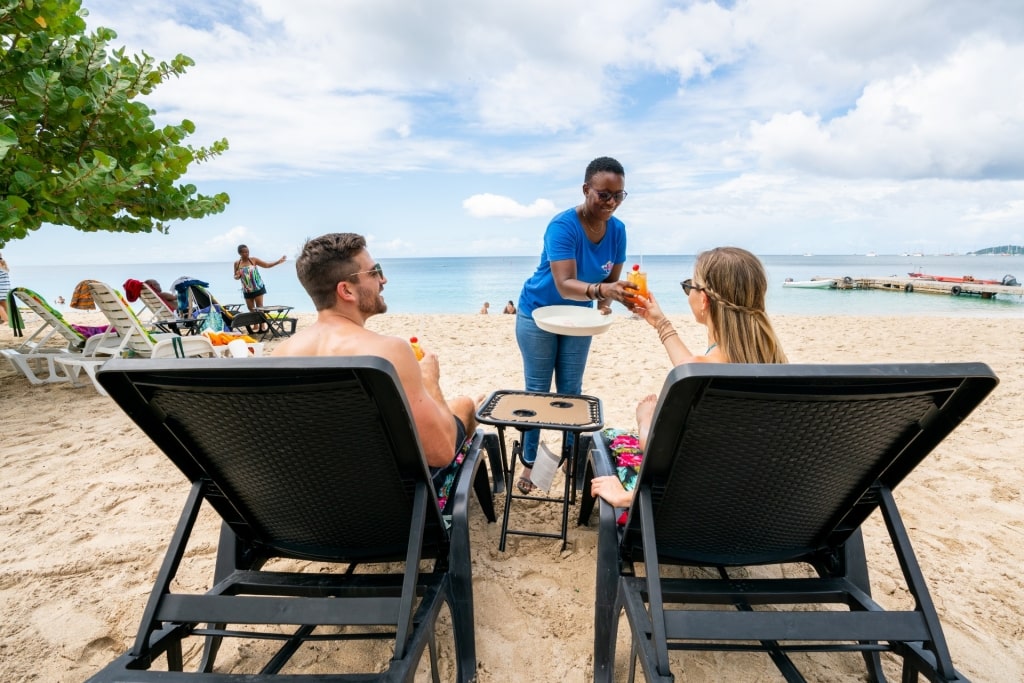
Beach in Grenada
Have you made your choice between an Eastern or Western Caribbean cruise? Either way, you can only win as both are deeply rewarding and packed with fantastic experiences. Browse our Caribbean cruises and find your dream tropical vacation.
